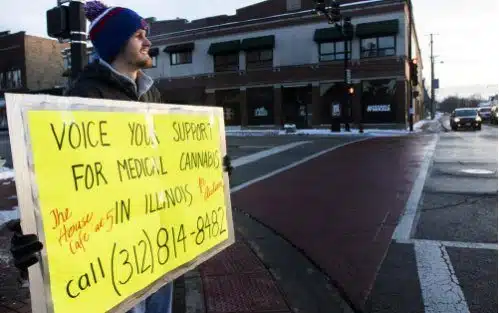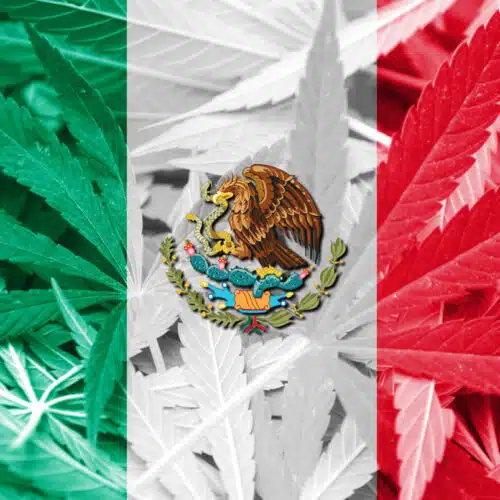Depression is a mood disorder that can have far-reaching emotional and physical effects. It is characterized by a persistent feeling of sadness and general loss of interest. Symptoms can range from cognitive to psychological to physical and beyond. Sufferers of depression often times face bouts with apathy, boredom, sadness, hopelessness, agitation, irritability, inability to concentrate, irregular sleep and eating patterns. Just like with any other medication, a medical plan that includes medical marijuana for depression should be approved by a qualified doctor.
By the year 2020, major depression will be second leading causes of disability in the world. But people with depression sometimes fail to realize (or accept) that there is a physical cause to their depressed moods. As a result, they may search endlessly for external causes.
According to the National Institute of Mental Health, people with depressive illnesses don’t all experience the same symptoms. How severe they are, how frequent, and how long they last will vary depending on the individual and his or her particular illness.
Here are common symptoms people with depression experience:
- Difficulty concentrating, remembering details, and making decisions
- Fatigue and decreased energy
- Feelings of guilt, worthlessness, pessimism and/or helplessness
- Insomnia, early morning wakefulness, or excessive sleeping
- Irritability, restlessness
- Loss of interest in activities or hobbies once pleasurable, including sex
- Overeating or appetite loss
- Persistent aches or pains, headaches, cramps, or digestive problems that do not ease even with treatment
- Persistent sad, anxious, or “empty” feelings
- Thoughts of suicide or suicide attempts
While these are common symptoms of depression, they may also occur in patterns. For example, a person may experience depression with mania or hypomania — a condition known as manic depression or bipolar disorder. Or the symptoms may be seasonal as in the case of seasonal affective disorder.
In the United State alone, about 14.8 million adults suffer from symptoms of major depression.
Traditional Depression Medication
There is a multitude of pharmaceutical treatments utilized to combat depression, many of which have significant deleterious side effects. These traditional treatments include:
Prozac
Prozac affects chemicals in the brain that may become unbalanced and cause depression, panic, anxiety, or obsessive-compulsive symptoms.
Common Prozac side effects may include:
- sleep problems (insomnia), strange dreams
- headache, dizziness, vision changes
- tremors or shaking, feeling anxious or nervous
- pain, weakness, yawning, tired feeling
- upset stomach, loss of appetite, nausea, vomiting, diarrhea
- dry mouth, sweating, hot flashes
- changes in weight or appetite
- stuffy nose, sinus pain, sore throat, flu symptoms or
- decreased sex drive, impotence, or difficulty having an orgasm
- suicidal thoughts
Zoloft
Zoloft (sertraline) is an antidepressant in a group of drugs called selective serotonin reuptake inhibitors (SSRIs). Sertraline affects chemicals in the brain that may become unbalanced and cause depression, panic, anxiety, or obsessive-compulsive symptoms.
Call your doctor at once if you have:
- very stiff (rigid) muscles, high fever, sweating, confusion, fast or uneven heartbeats, feeling like you might pass out
- agitation, hallucinations, fever, overactive reflexes, tremors
- nausea, vomiting, diarrhea, loss of appetite, feeling unsteady, loss of coordination
- headache, trouble concentrating, memory problems, weakness, fainting, seizure, shallow breathing or breathing that stops
Get emergency medical help if you have any of these signs of an allergic reaction to Zoloft: skin rash or hives; difficulty breathing; swelling of your face, lips, tongue, or throat.
Report any new or worsening symptoms to your doctor, such as: mood or behavior changes, anxiety, panic attacks, trouble sleeping, or if you feel impulsive, irritable, agitated, hostile, aggressive, restless, hyperactive (mentally or physically), more depressed, or have thoughts about suicide or hurting yourself.
Cymbalta
Cymbalta is used to treat major depressive disorder in adults. It is also used to treat general anxiety disorder in adults and children who are at least 7 years old. Cymbalta is also used in adults to treat fibromyalgia or chronic muscle or joint pain such as low back pain and osteoarthritis. Cymbalta is also used to treat pain caused by nerve damage in adults with diabetes.
Common Cymbalta side effects may include:
- vision changes
- dry mouth
- drowsiness, dizziness
- tired feeling
- loss of appetite or
- increased sweating
Wellbutrin
Wellbutrin (bupropion) is an antidepressant medication used to treat major depressive disorder and seasonal affective disorder.
Common Wellbutrin side effects may include:
More common
- Anxiety
- dry mouth
- hyperventilation
- irregular heartbeats
- irritability
- restlessness
- shaking
- shortness of breath
- trouble sleeping
Less common
- Buzzing or ringing in the ears
- headache (severe)
- skin rash, hives, or itching
Rare
- Confusion
- fainting
- false beliefs that cannot be changed by facts
- having extreme distrust of people
- seeing, hearing, or feeling things that are not there
- seizures (convulsions)
- trouble concentrating
Paxil
Paxil (paroxetine) is an antidepressant in a group of drugs called selective serotonin reuptake inhibitors (SSRIs). Paroxetine affects chemicals in the brain that may become unbalanced.
Some paroxetine side effects may not need any medical attention. As your body gets used to the medicine these side effects may disappear. Your health care professional may be able to help you prevent or reduce these side effects, but do check with them if any of the following side effects continue, or if you are concerned about them.
Common Paxil side effects may include:
- Acid or sour stomach
- belching
- decreased appetite
- decreased sexual ability or desire
- heartburn
- pain or tenderness around the eyes and cheekbones
- passing gas
- problems with urinating
- runny or stuffy nose
- sexual problems, especially ejaculatory disturbances
- sleepiness or unusual drowsiness
- stomach discomfort or upset
- trouble sleeping
Those suffering from depression often seek psychotherapy and behavioral therapy, while extreme cases can involve electroconvulsive therapy.
How Medical Marijuana Helps Treat Symptoms of Depression
THC is the cannabinoid most reported in the treatment of depression due to its capacity to regulate emotions. High THC strains such as sativas Jack Herer and Sour Diesel, hybrids OG Kush and Girl Scout Cookie, and indicas Grand Daddy Purple and Northern Lights have been reported by patients as being effective in coping with the condition.
Difference between CBD and THC in Marijuana
THC, or tetrahydrocannabinol, is the chemical responsible for most of marijuana’s psychological effects. It acts much like the cannabinoid chemicals made naturally by the body, according to the National Institute on Drug Abuse (NIDA).
Cannabinoid receptors are concentrated in certain areas of the brain associated with thinking, memory, pleasure, coordination and time perception. THC attaches to these receptors and activates them and affects a person’s memory, pleasure, movements, thinking, concentration, coordination, and sensory and time perception, according to NIDA.
THC is one of many compounds found in the resin secreted by glands of the marijuana plant. More of these glands are found around the reproductive organs of the plant than on any other area of the plant. Other compounds unique to marijuana, called cannabinoids, are present in this resin. One cannabinoid, CBD is nonpsychoactive, according to the National Center for Biotechnology Information, and actually blocks the high associated with THC.
Cannabidiol or CBD, is the cannabis compound that has significant medical benefits, but does not make people feel “stoned” and can actually counteract the psychoactivity of THC. CBD does not cause a high, unlike THC. The reason why CBD is non-psychoactive is due to its lack of affinity for CB1 receptors. CB1 receptors are found in high concentrations in the brain, and are the pathways responsible for the psychoactive effects of THC.
CBD and THC levels tend to vary between different strains and varieties of cannabis. By using selective breeding techniques, we have managed to create varieties with high levels of CBD and THC.
Research has suggested that cannabis may be a promising treatment option for a number of different physical and mental health conditions, from post-traumatic stress disorder to chronic pain. A study released this week suggests that depression can be added to that list.
Using compounds derived from cannabis — marijuana — to restore normal endocannabinoid function could potentially help stabilize moods and ease depression.
Neuroscientists from the University of Buffalo’s Research Institute on Addictions found that endocannabinoids — chemical compounds in the brain that activate the same receptors as THC, an active compound in marijuana — may be helpful in treating depression that results from chronic stress.
How To Medicate With Marijuana
The smoking and vaporizing of cannabis, alongside the ingestion of cannabis capsules and edibles have been reported as common methodologies employed by individuals suffering from depression.
Vaporizing or Vaping
If you don’t like the idea of smoke there is the option to vaporize cannabis. Vaporization does not use combustion to heat the medicine. Unfortunately there is some confusion out there about vaporizers. There are now hundreds of vaporizers to choose from. There are three basic types: pen, hand-help, and tabletop. The differences are in price, portability and size. Some vaporizers claim to be able to vaporize plant matter (flowers), wax and oils. Some can only do concentrates, some only oil. The most important difference is the method used to heat the medicine. There are basically two methods (with hybrids on the way)- conduction and convection.
True Vaporizing is done by convection, where air is heated, and in turn the hot air turns the medicine a to vapor which is then inhaled. Conduction Vaporizing happens when a hot element (metal plate, or bowl) touches the medicine. The medicine is placed directly in a metal or ceramic bowl or chamber that is heated which then heats the medicine and the smoke is inhaled. This is still combustion, and not truly vaporizing. This is closer to dabbing but with a much cooler heating element.
What Is Best Option For My Lungs
The cleanest method for inhaling medicine is true or convective vaporizing. It is better for your lungs since there is no burning or combustion.
Edibles
Cannabis edibles provide ways to eat or drink your medicine. Many medicated edibles and even bottled drinks are readily available at dispensaries. Be aware that most of the edibles at dispensaries are loaded with sugar and carbs. But basically what the edibles and drinks all contain are canna butter and/or canna oil. You can purchase these or easily make them at home to add to your own baked goods, snacks or even meals (especially if you are avoiding sugar or gluten).
Oils
Butane Hash Oil concentrate can be smoked, dabbed or vaporized. Marijuana can also be infused in more commonly used oils, such as olive oil. This is used in food to make medicated edibles.
About Diego Dias
In the case of Ottawa resident Diego Dias, he hadn’t tried cannabis until the age of 18. He had been long-opposed to all forms of so-called illicit drugs, never entertaining the idea that cannabis could be effective in managing his depression. Upon trying cannabis for the first time, he noticed improvement in some of the symptoms, including increased appetite and ability to sleep, as well as feeling better in general. However, he didn’t attribute this to his cannabis use or realize he was self-medicating.
Dias attempted suicide at age 23. Following this, he was briefly hospitalized and prescribed five different pharmaceutical drugs–three antidepressants and two antipsychotics. After six months on the medications with no improvement and a host of deleterious side effects, he realized that cannabis was the substance that was actually effective in managing his symptoms of depression. While his doctors were willing to help wean Dias off of the pharmaceuticals, they were resistant to help him obtain his medical marijuana authorization. Upon finally gaining authorization, Dias found access to the medicine that allowed him to live a normal life.
The only thing that has made my life harder is the fact that it’s a controlled substance, the fact that it’s illegal.
After this, Dias started getting his life together. He quite his job and went to Algonquin College to study film and television. He graduated at the top of his class, and has been working as a freelance videographer for two years. Dias says that he has never been happier. Medical marijuana has improved his life dramatically, but it isn’t without its challenges.


